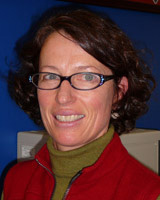Introduction
Research suggests that Australia's rural medical workforce issues would be positively influenced by supporting and encouraging rural students to study medicine1-5. Currently Australian Government incentives require medical schools to admit at least 25% of their students from those who have a rural background6. However, many medical schools have difficulty recruiting enough rural students; in 2003 only 20% of first-year medical students nationwide had a rural background, with Queensland the only state over 25%7.
Attempts have been made to assist rural students by medical selection procedures but recruitment has been hampered by the general barriers to tertiary education faced by rural students. Geographic distance and isolation8,9, financial costs2,3,9,10, and dislocation from family and friends3 all act as deterrents to further study. Added to these determinants are a perceived lower level of academic achievement2 and support for tertiary education from students, parents, and teachers in rural communities8,11, leaving rural students under-represented in Australian tertiary institutions12. Lack of access to information on medical careers and courses is a further barrier to rural students' academic and career decision-making2,3,5. The availability of accurate information and exposure to professional role models are among the most successful means of supporting a rural student's desire to study medicine3,5.
Studying medicine at the University of Adelaide
There is a sequential process for applying to study medicine at the University of Adelaide:
- school students sit the written Undergraduate Medicine and Health Sciences Admissions Test (UMAT)
- students with a score above a threshold are invited to a structured oral assessment
- subsequently, the Tertiary Entrance Rank (TER; a standardisation of end of school exam results), determines if assessed students are offered a place.
Poor or inadequate information on this complex admissions procedure has been found to deter potential students from considering studying medicine2,4,9,13.
Study aims
The present study sought data on rural students' attitudes to medicine and knowledge of the admissions processes. The study aimed to determine the accuracy and availability of medical course information, as well as the perceptions, knowledge and interest in applying for and studying medicine held by rural students, their parents and careers advisors.
Method
All rural South Australian secondary schools were stratified by Rural, Remote, and Metropolitan Area (RRMA)14 classification and funding type. Proportional allocation and random sampling from each stratum were utilised to obtain a representative sample of schools. Thus, 2 schools in RRMA areas 3 or 4; 11 schools in RRMA 5 areas; and 2 in RRMA 7 areas were selected. Of these, 13 were government-funded schools and 2 were independently funded. All year 11 and 12 students (n = 1802), their parents (n = 1802), and their school's careers advisors (n = 19) were included.
Questionnaires were developed following 5 focus groups with rural medical students at the University of Adelaide, rural parents and careers advisors, and piloted with current medical students and the project reference group. Responses were recorded using 5-point Likert scales or a yes/no format, and the data presented here are for collapsed agree/strongly agree responses, unless otherwise stated. The survey addressed 3 key areas: (i) demographic information; (ii) perceptions and knowledge of the entry processes and requirements for studying medicine; and (iii) interest in studying medicine and becoming a doctor.
A stamped envelope containing 1 student and 1 parental questionnaire, each with covering letters, and a reply-paid envelope was mailed to all year 11 and 12 students by schools, on behalf of the researchers. A careers advisor questionnaire, covering letter and reply-paid envelope were sent to each school careers advisor. The mail-out was repeated 2 weeks after the initial mail-out. A small incentive was offered to each school that gained a response rate of 50% or greater, and schools were reimbursed for the administrative costs of handling and posting questionnaires.
Ethics approval was gained from the University of Adelaide Human Research Ethics Committee, Department of Education and Children's Services, and Catholic Education South Australia. Consent was also gained from the principals of all schools selected to participate.
Statistical methods
Data were analysed using Microsoft Excel and SPSS statistical software (SPSS; Chicago, IL, USA; www.spss.com). Categorical responses were collapsed from 5 categories to 3. Comparative statistics were calculated using χ2 analyses for categorical variables. As a continuous variable, comparisons of perceptions of the minimum TER required for entry to medicine at the University of Adelaide were made using t-tests and analysis of variance (ANOVA) tests. Due to perceived TER scores being negatively skewed, a logarithmic transformation was applied to meet normality requirements. The level of significance was set at p ≤0.05. Missing data were removed from χ2 analysis but are included in the tables.
Results
In total, 461 students (25.6%), 512 parents (28.4%), and 12 careers advisors (63.2%) returned questionnaires, an overall response rate of 27.2%. Response rates at individual schools ranged from 15.9% to 43.9%.
The proportion of year 11 and 12 student respondents was relatively even, slightly more females responded than males, and over half of the student respondents had a family member who had attended university (Table 1). The majority of parent respondents were female and aged between 40 and 49 years.
Careers advisors, students and parents were found to hold inaccurate perceptions of the minimum TER required to study medicine at the University of Adelaide; half of careers advisors, 48.8% of students and 59.8% of parents believed the required score to be 95 or greater (Fig1), whereas the actual requirement was a score of 90. Although there are currently no prerequisite subject requirements at the University of Adelaide, 425 students (92.2%) and 477 parents (93.2%) reported that at least one prerequisite subject was required to 'get into' (gain entrance to) medicine.
Table 1: Student demographics
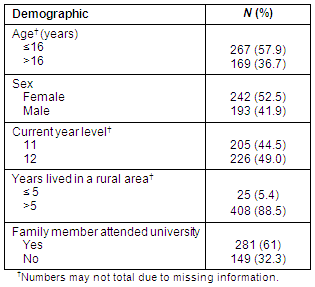
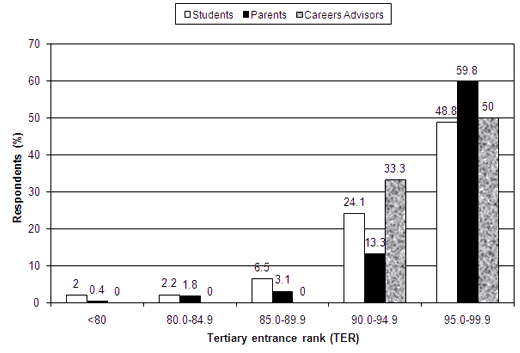
Figure 1: Perceived minimum tertiary entrance rank required for entry to medical course at the University of Adelaide, by respondent group
Students' opinions
Of the 461 student respondents, 78 (16.9%) reported they had seriously considered studying medicine. Of these 78 students, 73 (93.6%) had sought information about university entrance; however, only 24 (30.8%) understood the purpose of the medical admission interview and 31 (39.7%) the purpose of the UMAT, and 44 (56.4%) believed they could get the TER required for medicine. Additionally, 61 (78.2%) were either unsure or thought that medical students were required to study in the city for the length of the course, being unaware of the opportunities provided by the national Rural Clinical School program. This and other data are provided (Table 2).
Not surprisingly there were a number of significant differences between students who had seriously considered studying medicine and those who had not. They were significantly more likely to understand the purpose of the medical admission interview and UMAT, believe they could achieve the required TER, know that no specific subjects were required to get into medicine at the University of Adelaide, and know medical students are not required to study in the city for the entirety of the course (Table 2).
As a measure of potential interest in a medical career, students were asked whether they found the career of a doctor appealing (Table 3). A total of 96 students (20.8%) reported that being a doctor appealed to them; however, 34 (35.4%) of these students had never seriously considered studying medicine. Analysis of these two subgroups is presented (Table 4). Students who had not seriously considered medicine had less confidence in and knowledge of the requirements and processes for entry into medicine than those who had. No significant difference was found between the groups' perceptions of the minimum TER required for medicine at the University of Adelaide (93.3 ± 8.2 vs 93.1 ± 6.0, p = 0.432).
Table 2: Students' perceptions and knowledge on applying for and studying medicine
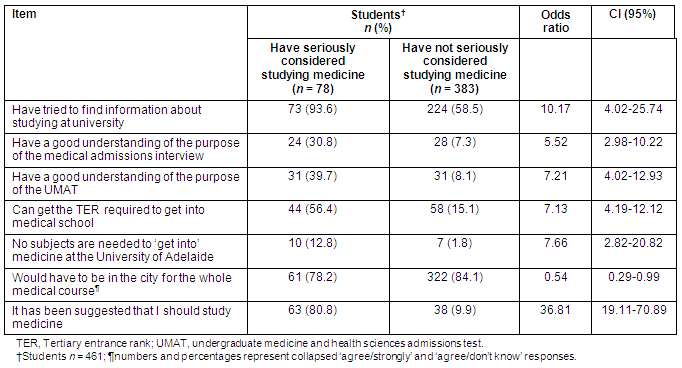
Table 3: Students' interest in studying and practicing medicine

Table 4: Perceptions and knowledge on applying for and studying medicine in students who find being a doctor appealing
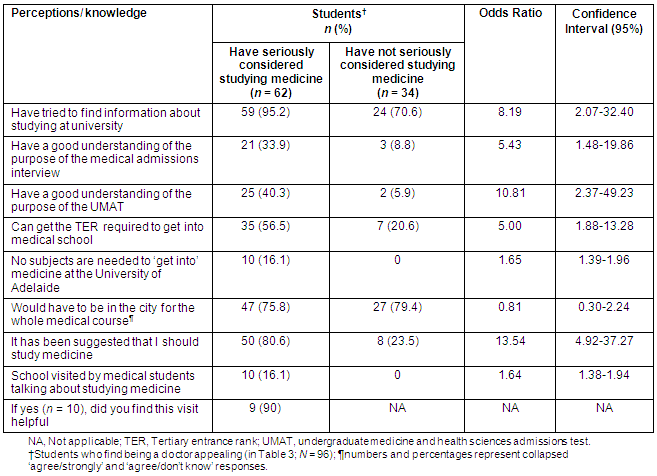
Parental opinions
A comparison of parents whose child had seriously considered studying medicine and those whose child had not showed significant differences in perceptions and knowledge of medical course entry requirements and processes. Parents whose child had seriously considered studying medicine were significantly more likely to understand the purpose of the medical admission interview and UMAT, and to believe their child could obtain the required TER for medicine, and to be aware that no prerequisite subjects are required for entry to medicine at the University of Adelaide (Table 5). They also perceived the minimum TER required to study medicine at the University of Adelaide to be significantly lower than their counterparts (93.8 ± 5.1 vs 95.8 ± 4.2, p = 0.001).
Table 5: Parents' perceptions and knowledge on applying for and studying medicine
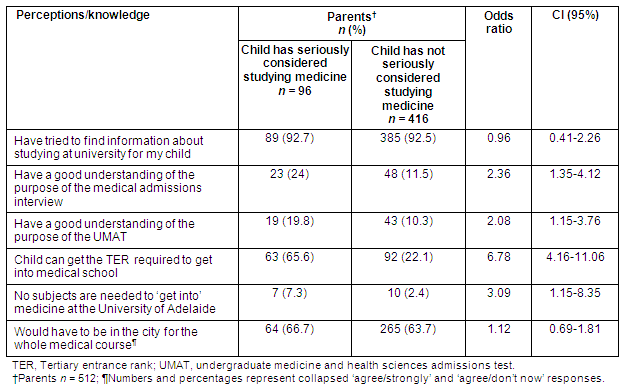
Career advisor opinions
Half of the careers advisors reported understanding the purpose of the medical admissions interview, and 58.3% reported understanding the purpose of the UMAT. While most were confident in their knowledge and access to information on medical courses in Adelaide, only 50% believed they had adequate access to information on interstate medical courses, which is reflected in fewer careers advisors being confident in their knowledge of interstate medical entry requirements. Only 25% of careers advisors stated their school had accessed medical career promotion activities, or knew that students are not required to study in the city for the length of the medical degree course. Career advisor responses to all questions are provided (Table 6).
Table 6: Careers advisors' perceptions, confidence and knowledge of applying for and studying medicine
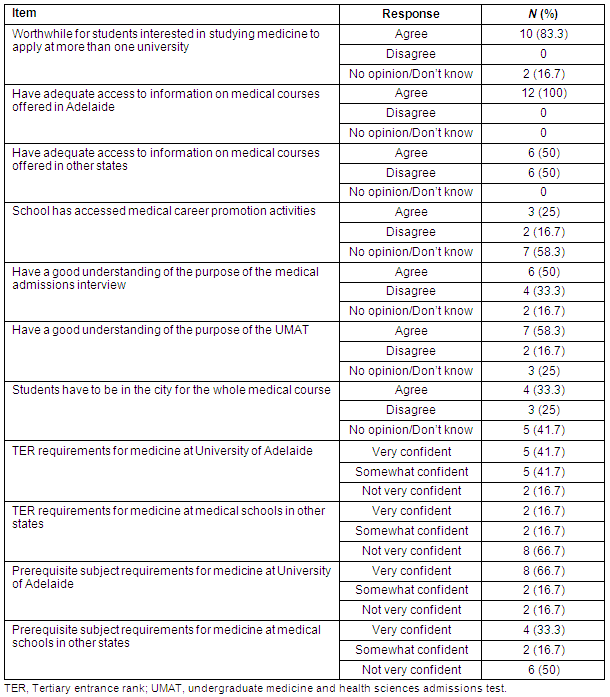
Discussion
The present study revealed misconceptions and deficiencies in knowledge about school leavers applying to study medicine at the University of Adelaide.
A key finding of the present study was the identification of a group of students who found the idea of being a doctor appealing but who had never considered studying medicine (n = 34, Table 3). These students reported less confidence and knowledge of requirements and processes for entry into the medical course than students who had seriously considered studying medicine. However, even among those who had seriously considered studying medicine, the majority still did not understand the purpose of the medical admission interview and UMAT, and believed that at least one prerequisite subject was required for entry to medicine at the University of Adelaide. Thus, poor information or inadequate knowledge may act as a barrier to these students gaining entry.
Students, parents, and careers advisors held inaccurate perceptions of TER scores and prerequisite subject for studying medicine at the University of Adelaide, with a large proportion believing the required TER to be 95 or greater (actually threshold = 90) with rural students also eligible for 6 bonus University Aggregate points to be added under the University of Adelaide's 'Fairway' scheme15. This may explain respondents' pessimism about obtaining the necessary score and their reluctance to apply, believing they could not obtain the necessary TER. That over 90% of students and parents believed at least one subject is necessary for entry to medicine is also a potential barrier. Many smaller rural schools cannot offer a comprehensive senior school curriculum16,17 and students may believe they cannot study and achieve in the prerequisite subjects.
The finding that many students and parents were unaware that medical students are not required to study in the city for the entire course would be of interest to all Rural Clinical Schools. As dislocation from family and friends is a recognised barrier to tertiary study3, an increased knowledge of rural medical education options may act as an incentive for rural high school students.
Some careers advisors reported deficiencies in their knowledge of processes for entry into a medical course, while their confidence generally corresponded with having accessed medical course information. Their knowledge and confidence was greater with the only local undergraduate entry medical school (Adelaide), and less so with interstate medical courses. Only a small number of careers advisors reported having accessed medical promotional resources, implying these deficiencies may be due to a lack of a 'critical mass' of students interested in medicine.
One limitation of the present study is that the response rate was relatively low, but this may be due to participants only responding if they had a particular interest in medical issues or university study. However, the raw number of responses was good, and the results are consistent with both the University of Adelaide's experience of rural student entry and the anecdotal opinions expressed by rural South Australians. A second limitation is that only year 11 and 12 students were surveyed. It has been shown that many students make study choices in earlier school years, and it is recommended that health careers promotion occurs with students in year 10 and earlier2. While the present study only collected data from a rural South Australian sample, it is believed that the findings are generalisable to rural schools throughout Australia.
Conclusion
In summary, this study indicates that a lack of accurate knowledge of the admissions processes, and the difficulty of obtaining this complex information, may be key impediments to rural students entering a medical course. Additionally, there appears to be a substantial group of students who find a medical career appealing but have not sought information on how to enter a medical course, or see it as unattainable. These barriers can be addressed through targeted medical careers promotion, including the provision of accurate, timely information about applying for and studying medicine to assist in educating students, parents and careers advisors. This may result in an increase in the number of rural background students in medical courses and so achieve a worthwhile goal for all medical schools.
Acknowledgements
The Department of Health and Ageing funds the Rural Clinical School (RCS) program as part of the Australian Government Rural Health Strategy. Ben Hoggan was recruited to manage this project and employed with RCS funds. Caroline Laurence is employed by the Adelaide to Outback GP Training Program. All other authors were employed on RCS or Rural Undergraduate Support and Coordination funds managed by Spencer Gulf Rural Health School. A new academic position has been created to implement the recommendations of this work.
References
1. Laven G, Wilkinson D. Rural doctors and rural backgrounds: how strong is the evidence? A systematic review. Australian Journal of Rural Health 2003; 11: 277-284.
2. Heaney S. Marks - Money - Motivation: How can more secondary students from rural and remote areas be encouraged to choose a career in rural and remote health care? Newcastle, NSW: NSW Rural Doctors Network, 1998.
3. Durey A, McNamara B, Larson A. Towards a health career for rural and remote students: cultural and structural barriers influencing choices. Australian Journal of Rural Health 2003; 11: 145-150.
4. Durkin S, McConnell M. Undergraduate students promoting health careers to rural secondary students. Adelaide, SA: Rural Health Support, Education and Training Program of the Commonwealth Department of Health and Aged Care, 2000.
5. Alexander C, Fraser J. The promotion of health careers to high school students in the New England health area: the views of high school careers advisors. Australian Journal of Rural Health 2001; 9: 145-50.
6. Department of Health and Ageing. Rural Undergraduate Support and Coordination program funding parameters and reporting framework for annual reports. Canberra, ACT: Commonwealth of Australia, 2006.
7. Dowton B, Brown D. Training our future medical workforce. Medical Journal of Australia 2004; 180(12): 652.
8. James R, Wyn J, Baldwin G, Hepworth G, McInnis C, Stephanou A. Rural and isolated students and their higher education choices: a re-examination of student location, socioeconomic background, and educational advantage and disadvantage. Commissioned Report No. 62. Melbourne, VIC: Centre for the Study of Higher Education and Youth Research Centre, 1999.
9. Gorton S, Buettner P. Advance Australia fairly. Australian Journal of Rural Health 2004; 12: 93-94.
10. Durkin S, Bascomb A, Turnbull D. Rural origin medical students: how do they cope with the medical school environment? Australian Journal of Rural Health 2003; 11: 89-95.
11. Harvey-Beavis A, Robinson L. Views and influences: tertiary education, secondary students and their advisers. Canberra, ACT: Australian Government Department of Education, Training and Youth Affairs, 2000.
12. Nelson B. Higher Education Report for the 2004 to 2006 triennium. Canberra, ACT: Australian Government Department of Education, Science and Training, 2004.
13. Jones J, Stradley A. A recruitment of rural students to the health professions. In: G Gregory (Ed.). The politics of rural health: how far have we come? Proceedings, 3rd National Rural Health Conference; Mt Beauty, VIC; 3-5 February 1995; National Rural Health Alliance, 1995.
14. Department of Primary Industries and Energy & Department of Human Services and Health. Rural, Remote and Metropolitan Area (RRMA) Classification Census Edition. Canberra, ACT: Department of Primary Industries and Energy & Department of Human Services and Health, 1991.
15. The University of Adelaide. What is the Fairway Scheme?. The University of Adelaide. (Online) 2001. Available: http://www.adelaide.edu.au/publications/pdfs/fairway.pdf (Accessed 1 October 2005).
16. Craig D. Nature of educational disadvantage in country schools: a South Australian perspective. In: D McSwan, M McShane (Eds). Proceedings, Issues affecting rural communities; 10-15 July 1994; Townsville: QLD: Rural Education Research and Development Centre, James Cook University, 1994.
17. Bartholomaeus P. "They have to offer the top subjects": a rural school and its curriculum. In: Proceedings, Australian Association for Research in Education Conference; 3 November-4 December 1997; Brisbane, QLD: Australian Association for Research in Education, 1998.
Published 12 November 2009; modified 24 November 2009.
A correction and modification was made to Table 5.





